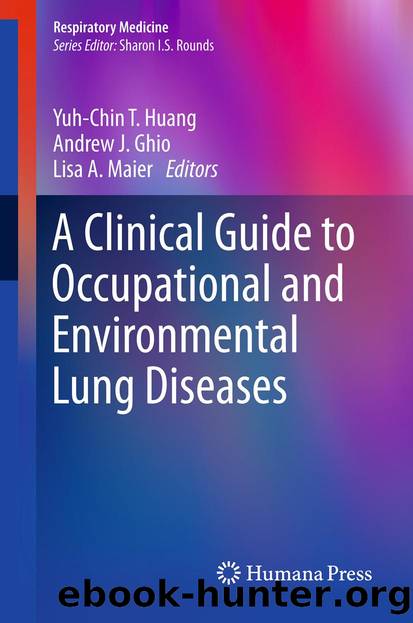A Clinical Guide to Occupational and Environmental Lung Diseases by Yuh-Chin T. Huang Andrew J. Ghio & Lisa A. Maier

Author:Yuh-Chin T. Huang, Andrew J. Ghio & Lisa A. Maier
Language: eng
Format: epub
Publisher: Humana Press, Totowa, NJ
Has the Decline in Exposure Levels to Asbestos in the Workplace Altered the Frequency of Mesothelioma?
As noted earlier, there remains considerable discussion regarding whether lung cancer occurring in an asbestos-exposed worker requires the presence of asbestosis for causation or can be attributed to asbestos exposure alone. Mesothelioma, on the other hand, is recognized as the most sensitive and specific marker of adverse health effects attributed to asbestos [53]. It is sensitive because this tumor can develop from lesser exposures [given substantial (usually more than 30 years) latency] and specific as the great percentage of those with this disease can provide a history of workplace or environmental asbestos exposure. In addition, exposures to amphibole fibers increase this adverse asbestos effect.
The concern is whether the rate of mesothelioma is declining and reflecting the exposure changes that have been made over the past generations. In the United States, for example, a series of changes in the PEL for asbestos resulted in the current standard for exposure being established in 1986. Furthermore, in the United States, the rate of importation and utilization of asbestos has dramatically lessened. Using 2005 data, a review of the annual rate of mesothelioma deaths in 31 countries showed no clear-cut decline compared to 1996 data [54]. In seven countries, the mortality rate increased (in five, this occurred in a statistically significant manner). The mortality rates were equivocal in 24 countries (in five of these countries, rates declined but were not statistically different from the 1996 rates). There was no change in the US rate of change over these 10 years. Countries that banned asbestos showed the greatest declines in annual mortality rates. Not surprisingly, with what is known about the latency effect for the development of mesothelioma, countries with the greatest decline in asbestos utilization during 1970–1985 showed the greatest annual rate of mesothelioma decline.
Even though the data describing mesothelioma rates are presented as age-adjusted, it should be noted that the life span of a population may dramatically affect the mesothelioma mortality rate by decreasing the potential latency period. As an example, the US male life expectancy averages 75–76 years, while in India, the mean span is 60–61 years. Most noticeably, in South Africa, the annual mortality rate for mesothelioma was 40.5 per million white men deaths in 1984. From 1995 to 2007, this rate has held steady at approximately 15 per million deaths per year. Importantly, from 1991 to 2004, the average life expectancy declined from 60.1 to 49 years in black men and from 66.5 to 61.7 years in white men [55]. Because of the well-recognized long latency period of mesothelioma, the many premature deaths due to other illnesses (notably tuberculosis and HIV infection) may well explain the suspected fewer cases of mesothelioma. In this example, the decrease in the number of mesothelioma cases may not be associated with the implementation of dust control measures.
In summary, investigators from many countries are optimistic that the worldwide mortality rate for mesothelioma will change from essentially “holding steady” to substantially declining over time.
Download
This site does not store any files on its server. We only index and link to content provided by other sites. Please contact the content providers to delete copyright contents if any and email us, we'll remove relevant links or contents immediately.
Men In Love by Nancy Friday(4969)
Everything Happens for a Reason by Kate Bowler(4481)
The Immortal Life of Henrietta Lacks by Rebecca Skloot(4264)
Why We Sleep by Matthew Walker(4193)
The Sports Rules Book by Human Kinetics(4081)
Not a Diet Book by James Smith(3156)
The Emperor of All Maladies: A Biography of Cancer by Siddhartha Mukherjee(2934)
Sapiens and Homo Deus by Yuval Noah Harari(2855)
Day by Elie Wiesel(2599)
Angels in America by Tony Kushner(2395)
Endless Forms Most Beautiful by Sean B. Carroll(2353)
A Burst of Light by Audre Lorde(2350)
Hashimoto's Protocol by Izabella Wentz PharmD(2206)
Dirty Genes by Ben Lynch(2164)
Reservoir 13 by Jon McGregor(2149)
And the Band Played On by Randy Shilts(2020)
Wonder by R J Palacio(1993)
The Immune System Recovery Plan by Susan Blum(1971)
Stretching to Stay Young by Jessica Matthews(1948)
